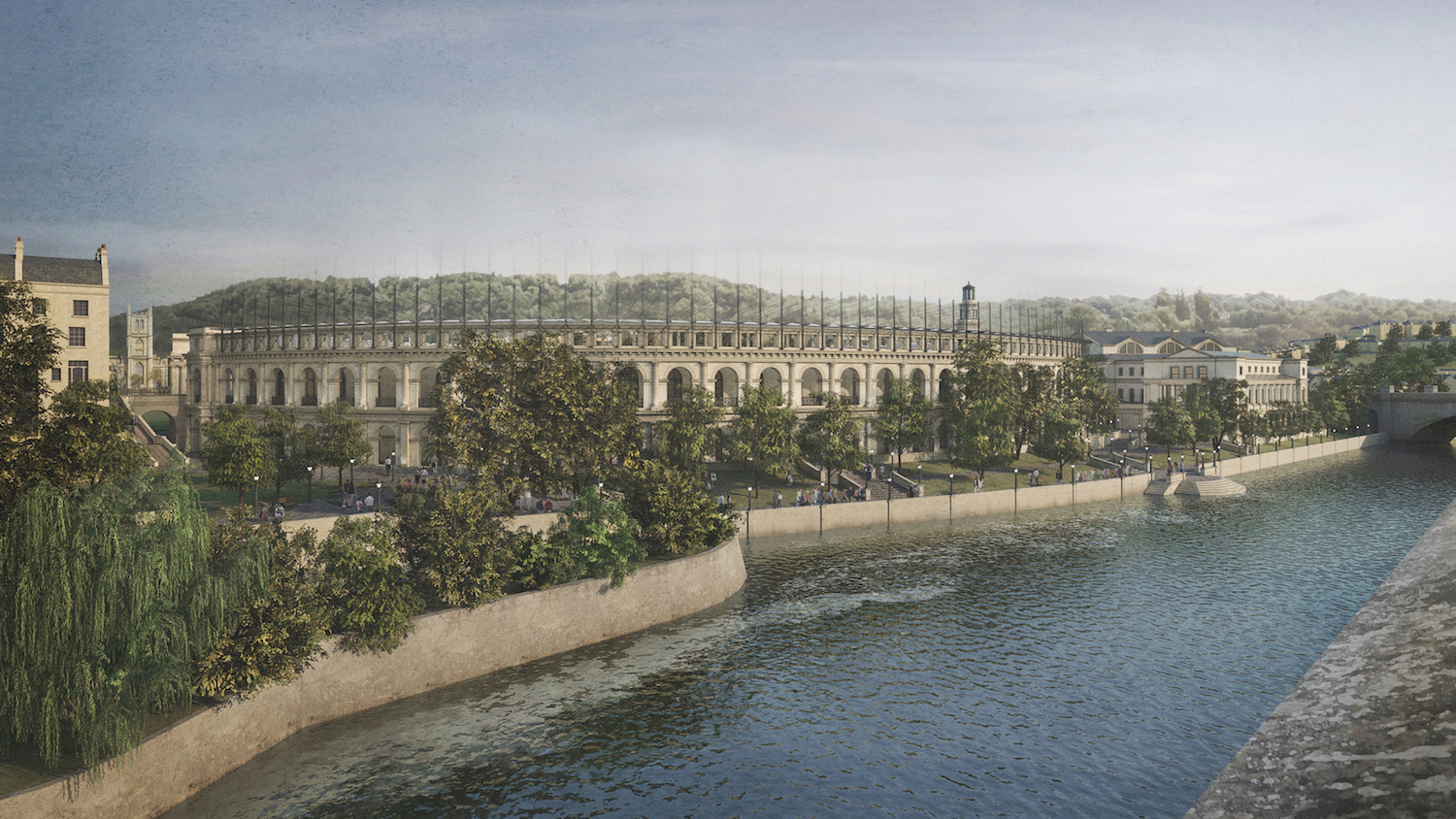
The architect who proposed a Roman-style colosseum for the new Bath Rugby stadium has defended his higher-cost plan, saying “you have to have the balls” to pursue a scheme that would provide a greater return on investment.
Mark Wilson Jones, director of Apollodorus Architecture, teaches architectural history and theory at the University of Bath.
He and colleague Jakub Ryng unveiled their counter-proposal for an oval, 18,000-seat colosseum-style stadium built with Bath stone last month as an alternative to the minimalist, rectangular steel structure Bath Rugby has been advancing this year.
Appearing on this month’s 21CC podcast, Wilson Jones acknowledged that their proposal, which includes redeveloping the 1970s leisure centre abutting the site to the south, would be more than Bath Rugby could afford.
But he insisted that if investors backed the scheme with the club, the development would create a new quarter for the city with shops, bars, and hotels making it an attractive year-round, riverside destination.
“Importantly, that revenue would be coming in all week long, it wouldn’t just be on match days,” Wilson Jones said.
“It would enable the visitor to Bath and the Bath resident to cross over the river and not feel they’re in a completely different territory. It would create a completely new route of public domain and commercial offer.
“You have to have the balls to want to do this kind of thing, you have to have the vision, the commitment and the long-term investment, and then it will pay for itself.”
He said they sent their proposal to Bath Rugby at the beginning of the year, but the club “cordially declined” to pursue the colosseum idea.
The club conducted public consultations on its scheme in the spring of this year, and is expected to submit a planning application to Bath and North East Somerset Council at any moment.
A pleasant fiction, is it not?
Also appearing on the podcast is leading Bath archeologist and expert on Roman Bath, Peter Davenport.
Asked whether Bath’s Roman history, now largely hidden, constituted a case for the colosseum, Davenport pointed out that nothing like it existed in the Roman town. He said: “It’s quite a nice idea to reduce it to an oval, I think. I can see their thinking along those lines, but what they’ve produced is something that never probably got any farther north than Paris at the outside and typically now, if you want to go and find one that looks like that, in Arles, in southern France.”
He added: “It picks up on an idea of Roman Bath that is probably Victorian rather than a modern version.”
Don’t miss out on BIM and digital construction news: sign up to receive the BIMplus newsletter.












